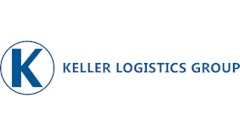Applying lean principles in the supply chain isn’t a new concept, yet adoption by cold storage providers is lagging. In the May-June 2014 issue of COLD FACTS, published by the Global Cold Chain Alliance, the article “Improve Customer Service and Reduce Costs With Lean Management Principles” discusses why it’s important to get on board with Lean. Following are highlights from the article:
The term “lean” was used by researchers to describe car manufacturer Toyota’s business model in the 1980s. The most basic definition of lean management is the elimination of waste to provide the highest level of value to customers. Although manufacturers were the first to adopt lean principles, its application is beneficial to any type of warehousing or distribution industry, including the cold storage facility industry.
Unfortunately, the majority of cold storage facility owners have yet to implement any lean principles. Unlike industries that may have stable, predictable inventories and long-time customers with needs that do not change frequently, cold storage warehouse owners do face some challenges that require tailoring activities to fit their needs.
There are four key areas of focus in lean warehousing and distribution operations that produce efficiencies for cold storage facility owners:
1. Storage. Profiling product and storage needs helps owners develop the best configuration to optimize space utilization and to make it easy for employees to locate bins, pick items and complete orders.
Addressing storage inefficiencies is one way small warehouse operators can put themselves on par with larger operators. Not only is space used efficiently, but organizing storage to help employees to work faster and more accurately expands the volume the warehouse can handle.
Profiling storage needs begins by analyzing multiple facets of warehouse needs—such as type of product, bulk versus bin versus pallet and picking method used to complete the order. While larger companies may have staff and technology to evaluate space, profile storage needs and design storage layout, smaller companies often do not have staff to perform this task. Contracting with an outside expert to perform the analysis is a viable option. The contract can be month-to-month or can be a one-time effort. It is important to remember that storage profiling is most effective when it is ongoing, so if an expert is hired once, plan to repeat the profile and analysis when the company adds a new customer, handles a new product, or adds a number of new SKUs to inventory.
2. Foundation. Setting the foundation for a lean organization depends on the commitment and ability of the management team. The process involves knowing your business, standardizing business practices, organizing the work environment to enhance productivity, utilizing tools to support change, and establishing processes to promote continuous improvement.
One important tool for organizing your business is the Five S’s:
- Sortation—Keep things sorted and separated properly. Remove unneeded things, materials and merchandise.
- Straightening—Arranging, organizing, streamlining, simplifying your processes, methods to make it easy for workers to work in the most efficient manner.
- Shining—Your operation needs to be clutter-free, trash-free, with housekeeping maintained at its highest. Keeping your warehouse clean is not a process, it’s a mentality.
- Standardization—Standardization has to do with the consistent application of the first three S’s. It’s monitoring and making sure that we continually apply our best practices and maintain the consistency of the way we do things.
- Sustaining—Sustaining is the maintenance of a productive, stabilized work environment as a process of continuous improvement. Goals and standards should require sustained compliance. Monitor constant buy-in of your employees.
3. Just-in-Time. In manufacturing, Just-in-Time (JIT) is a strategy to reduce the amount of unused inventory to reduce costs in the business. In warehouse operations, JIT addresses inefficiencies in work processes and labor management.
The first step is to perform a detailed and systematic analysis of every aspect of an operation through direct and close observation of the work and consultation with managers and employees. It is impossible to get a feel for the many tasks performed in a warehouse in any other way. Following observation, the creation of process charts and standard operating procedures set the stage for work measurement.
Productivity improves under a measurement program, not as a result of faster motions, but rather as a result of encouraging employees to apply themselves more continuously to the task, to develop the proper skills and to avoid time-consuming interruptions.
A contractor can help with the detailed and systematic analysis of the business operation as well as development of standardized processes. This does not require a long-term commitment and it does give cold storage facility operators access to expertise and breadth of knowledge that most companies do not have in-house.
Unfortunately, work measurement is one area in which most cold storage warehouse operators do not see as necessary. The reasons are varies, but the fact that most cold warehouse managers have come up through the ranks of the company means many managers assume they know what is happening in the business.
While there are technology solutions for work measurement, organizations without a warehouse management system (WMS) can collect the data required for analysis with pen and paper.
When measuring work, don’t forget to have regular conversations with employees. Those who are performing below the standard may be able to identify issues you can address to improve performance. Lighting levels, clear identification of item locations, access to equipment throughout the warehouse or an inefficient work process are just a few issues employees may be able to bring to your attention. Employees who are routinely top performers can provide insight to their success, which helps management develop best practices to implement across the workforce. As the process of work measurement continues, employees will become more proactive and suggest opportunities for improvement, even if they are high performers.
4. Culture. Although lean tactics, tools and strategies can be implemented in stages, a cold storage warehouse or distribution company can only become a lean organization by transforming the company’s culture.
Throughout implementation, remember that lean initiatives are people-centric. Education and ongoing communications to share information and solicit input are critical. The best approach is to get everyone involved.
Implementation of lean initiatives may take longer as time is spent training employees, but the results are more substantial and are sustainable, when everyone understands the program. This team approach is a core component of lean management.
Taking an intentional step to improve your company throughout all areas provides value to your customers, reduces employee turnover and improves your bottom line.
For more information on the Global Cold Chain Alliance, visit www.GCCA.org.

















